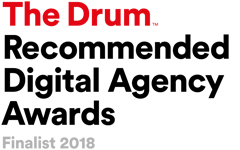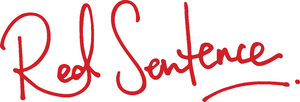In a world dominated by the digital era, it’s easy to forget some of the more traditional, simple yet effective marketing activities you can undertake, like corporate brochure design.
Remember print?
That’s right, those leaflets and catalogues we used to create and send out to potential clients and customers.
It might be a generational thing, but I still love it when I receive a piece of well-designed and thought-out printed collateral. The tactlessness and even the smell of freshly printed materials make me think back to my days as a graphic design student. Thinking about the care and time that has gone into the design and how the designer carefully thought about things like paper and size. How they wanted it to make an impression.
As a youngster, one of my favourite things was when I purchased a CD, cassette or LP. I would love to open it up, put the music on and read the notes and lyrics which would be carefully designed into the inserts. They would often open up into small booklets.
Digital vs print
Of course, you don’t get that anymore – with streaming services like Apple Music and Spotify you get to see the album art thumbnail and some notes on the artist. But nothing you can touch and feel.
For me, the packaging and print would make the album more personal, and I could appreciate the design that went into it and I would read the lyrics as I listened, it was my way of connecting.
Looking at a screen rather than being able to hold and flick through something provides a completely different experience.
For this reason, there is a certain nostalgia I feel when I get a really well-designed item of print, be it a corporate brochure design, catalogue design or (thanks to the vinyl revival) a new LP.
Good print design, especially corporate brochure design is a dying art form, but something which is still extremely effective.
Imagine the impact it would have on a potential client when they open up a packet to find a well-designed and printed brochure rather than a cold email, which they can keep handy and flick through at their convenience.
As the late Milton Glaser once said…
“There are three responses to a piece of design – yes, no, and WOW! Wow is the one to aim for.”
Wise words from a graphic design legend.
Unfortunately, it doesn’t help when we see too many catalogues and brochures thrown together by someone with minimal design knowledge or appreciation for the more technical aspects of laying out pages, things like image quality, lack of bleed or poor layout not allowing the users eyes to flow across the page.
There are lots of things you need to think about when designing a brochure which is why you should enlist the help of a graphic design agency. They need to be creative, technically correct and provide the reader with the right amount of info.
Here are some of the key things to think about when planning your corporate brochure design:
Catalogue/brochure binding
Depending on the number of pages, you have a choice of how they are bound together.
Perfect binding
With a perfect binding, the pages are glued together so you get a spine to the brochure. Therefore it works well when you have a higher number of pages.
The cover doesn’t have to be the same as the inner pages, so you tend to get a thicker cover.
Saddle stitch
A better solution is when there are fewer pages. Essentially the pages are gathered together, folded and stapled together down the fold.
This is the most common and cost-effective option when it comes to binding.
Wire/spiral binding
With this option, you have a wire spine to the brochure on which the pages turn.
It’s common to have a hard front and back cover with this option to provide strength.
Special finishes
Spot UV varnish
A spot UV finish is a thin layer applied to a design which provides a glossy finish in contrast to the matt finish of the page.
It works well if you use it to highlight specific elements of a design like a logo.
Die cutting
With this finish, you simply cut out sections of a page so that the page below shows through.
Emboss/Deboss
Embossing is created by pushing a shape out of the page so that it is raised above the surface. Debossing is the opposite when you push/indent a shape into the page.
It works best when using quite thick stock (card/paper).
Foiling
A great way of evoking feelings of quality, foiling is the process of adding gold or silver to the design.
Ideal for highlighting logos or text.
Print methods (non-digital)
Lithography
The traditional way of printing materials. It uses plates created in 4 colours, CMYK (cyan, magenta, yellow, and key/black) which are rolled over the stock in turn to create full-colour prints.
Screen print
Common for things like printing t-shirts, screen printing uses a stencilled mesh frame through which ink is passed to create a print. Generally not used for things like corporate brochure design.
Used when the colour palette is limited.
Stock
Stock is the term often used to describe the paper or card you use for your brochure design. There are some things to consider when choosing your stock:
Weight
Usually measured in gsm (grams per square metre), the higher the gsm the thicker and heavier the stock.
As a rough guide, a normal sheet of printer paper can be about 80gsm, whereas a business card is about 300/350gsm.
Silk/matt/gloss
Mostly self-explanatory! Silk is somewhere in the middle. Therefore it has a slight sheen.
Brochure design conclusion
Don’t discount the value of printed materials for your marketing. A well-designed brochure or magazine is more likely to have a longer lifespan than an email.
It may take up residence on a coffee table or on someone’s desk, but when designed and executed well, it can provide a constant reminder of you and your services.
The print should be a key component of your wider marketing strategy. Be it direct mail, targeted account marketing or a giveaway at a trade show, ensure your branding is consistent and your message clear. Speak to our design team to see how we can help with your corporate brochure design.









